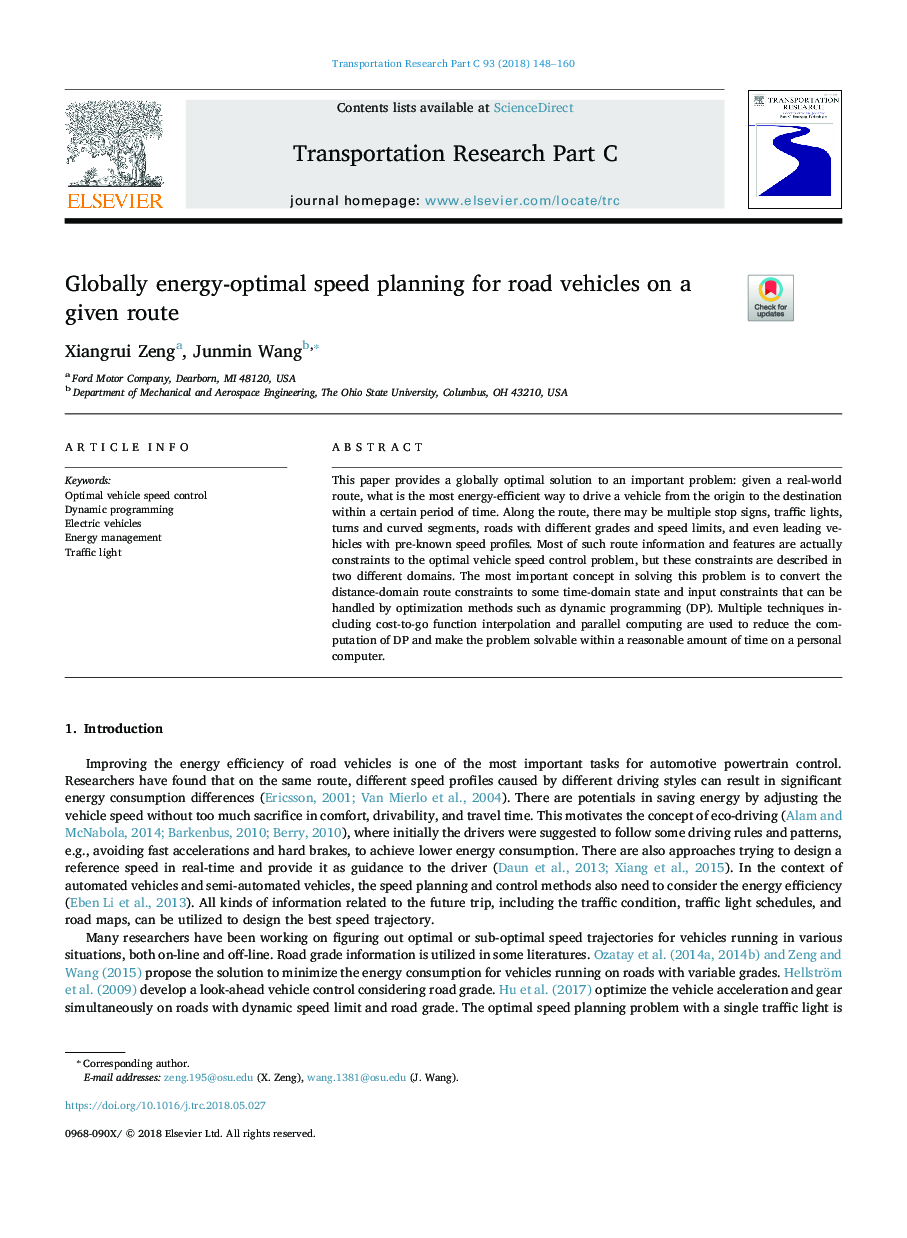| Article ID | Journal | Published Year | Pages | File Type |
|---|---|---|---|---|
| 6935740 | Transportation Research Part C: Emerging Technologies | 2018 | 13 Pages |
Abstract
This paper provides a globally optimal solution to an important problem: given a real-world route, what is the most energy-efficient way to drive a vehicle from the origin to the destination within a certain period of time. Along the route, there may be multiple stop signs, traffic lights, turns and curved segments, roads with different grades and speed limits, and even leading vehicles with pre-known speed profiles. Most of such route information and features are actually constraints to the optimal vehicle speed control problem, but these constraints are described in two different domains. The most important concept in solving this problem is to convert the distance-domain route constraints to some time-domain state and input constraints that can be handled by optimization methods such as dynamic programming (DP). Multiple techniques including cost-to-go function interpolation and parallel computing are used to reduce the computation of DP and make the problem solvable within a reasonable amount of time on a personal computer.
Related Topics
Physical Sciences and Engineering
Computer Science
Computer Science Applications
Authors
Xiangrui Zeng, Junmin Wang,
